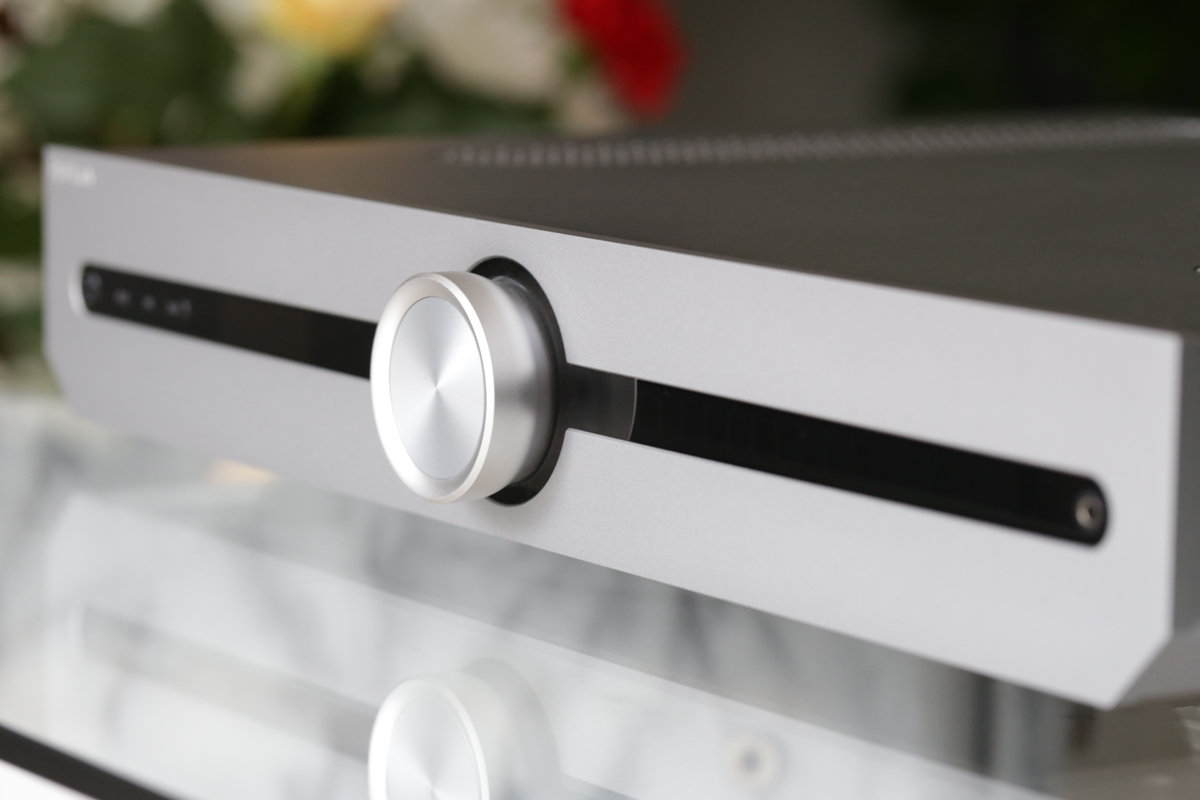Note: for the full suite of measurements from the SoundStage! Audio-Electronics Lab, click this link.
It’s almost ten years since Lenbrook Industries launched its Bluesound range of multiroom audio components. At the heart of those products is the BluOS software platform, developed in-house by the Canadian company. Lenbrook, which also owns the NAD and PSB brands, later added BluOS streaming capability to several NAD components. More recently, Lenbrook has licensed BluOS technology to several third-party brands, including Cyrus Audio, DALI, Peachtree Audio, Monitor Audio, and Roksan.
BluOS is a rich, robust platform, capable of streaming audio to up to 16 zones over Wi-Fi, or 64 zones over ethernet. It’s controlled by Lenbrook’s BluOS Controller app, which is available for Android, iOS, macOS, and Windows. BluOS-enabled components support playback of high-resolution audio to 24-bit/192kHz and have MQA decoding and rendering capability. The BluOS app has integrated support for more than 20 streaming services, including several that offer lossless and hi-rez audio, such as Amazon Music, Deezer, Idagio, Qobuz, and Tidal.
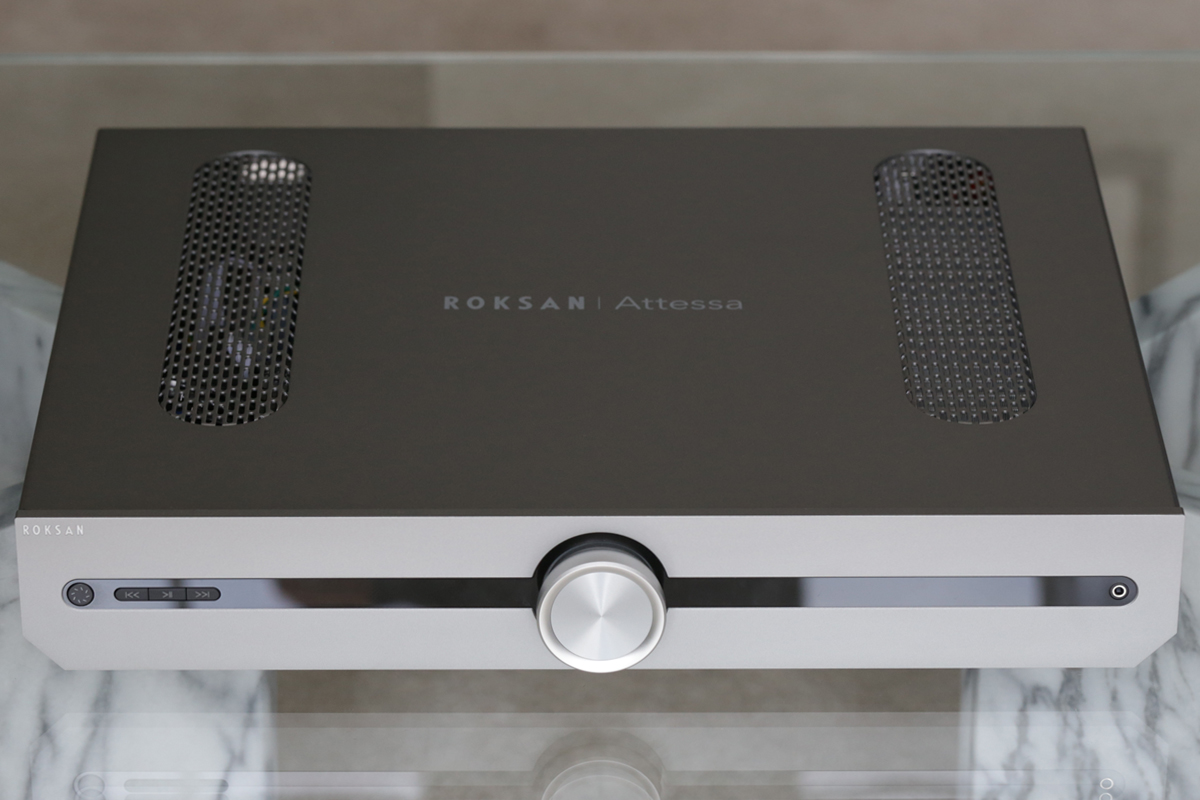
BluOS streaming is a central feature of the subject of this review, the Roksan Attessa streaming integrated amplifier ($3399, all prices in USD). The Attessa is a class-AB design rated at 80Wpc into 8 ohms. Features include a DAC, moving-magnet phono stage, and headphone output. Roksan also offers a non-streaming model, the Attessa integrated amplifier, without the BluOS connectivity.
Description
Roksan was founded in London, England, by Tufan Hashemi and Touraj Moghaddam; its first product was the Xerxes turntable, released in 1985. In the decades that followed, Roksan introduced many more innovative components, including the original Attessa CD transport, DAC, and power supply, which were released in 1992. After being acquired by Monitor Audio in 2016, Roksan initiated a five-year R&D project, during which time it developed a new range of Attessa components. The new line includes the Attessa turntable ($1799), the already-mentioned Attessa integrated amplifier ($2199), the new Attessa CD transport ($1149), and this product, the Attessa streaming integrated amplifier.
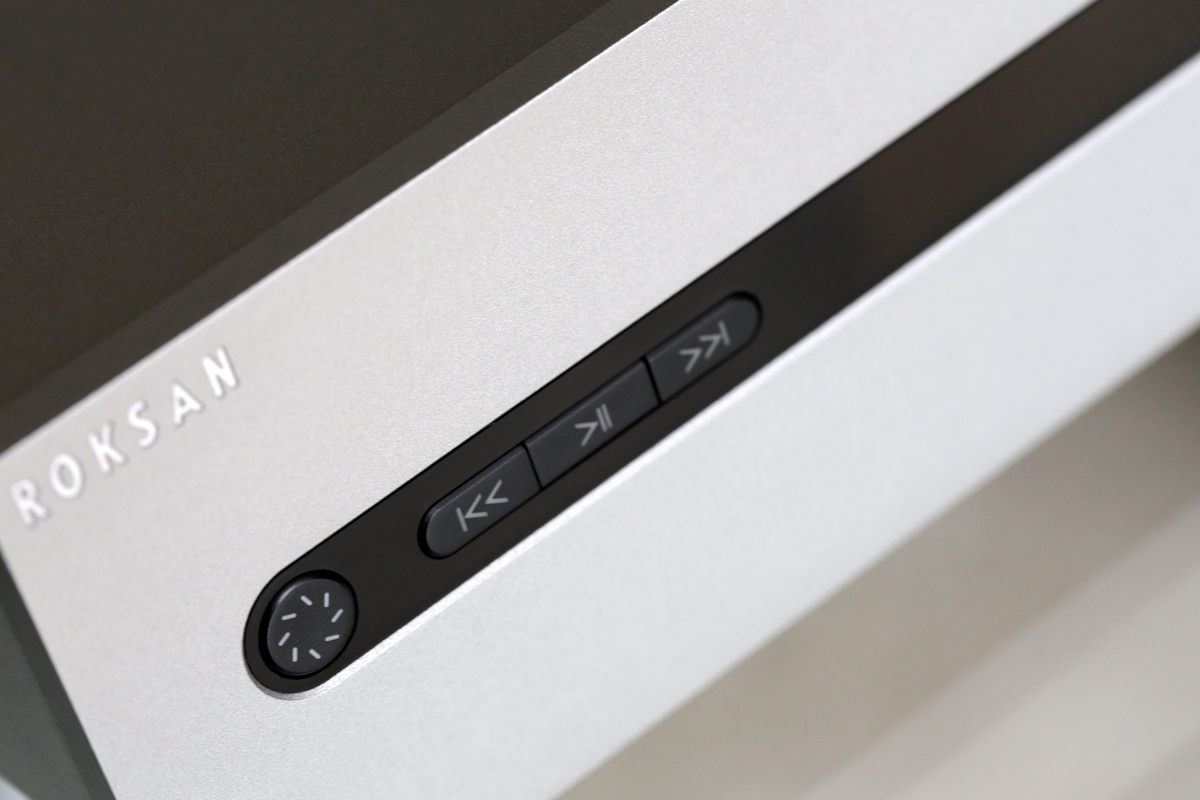
Available in black or silver finishes, the Roksan Attessa streaming integrated amplifier is characterized by a slim profile (17″W × 3″H × 14.7″D) and a simple front panel with one large, central control knob. The on/off button is to the left, and lights up from red to orange when pressed. Next to the power button are three buttons for navigating tracks—previous track, play, and next track. To the right of these buttons is an OLED display, which shows the source that’s playing. A useful feature—a hint at the detail Roksan paid to ease of use—is the presence of three direct presets on the OLED display. For example, a preset can be configured to take you directly to a playlist in one of your streaming services. On the other side of the control knob is another OLED display, which indicates the volume level by a series of vertical lines.
The Attessa has a lot of tidy engineering, including the use of a balanced topology within the preamp section—this results in lower noise levels, Roksan says. The central control knob is another neat touch, with two functions—a volume knob when you just turn it and a source selector when you push and turn. The knob vibrates slightly to give you some haptic feedback when you change the source. At the far right of the front panel, the Attessa has a 1/8″ headphone jack. When you plug in headphones, the speakers are muted automatically.
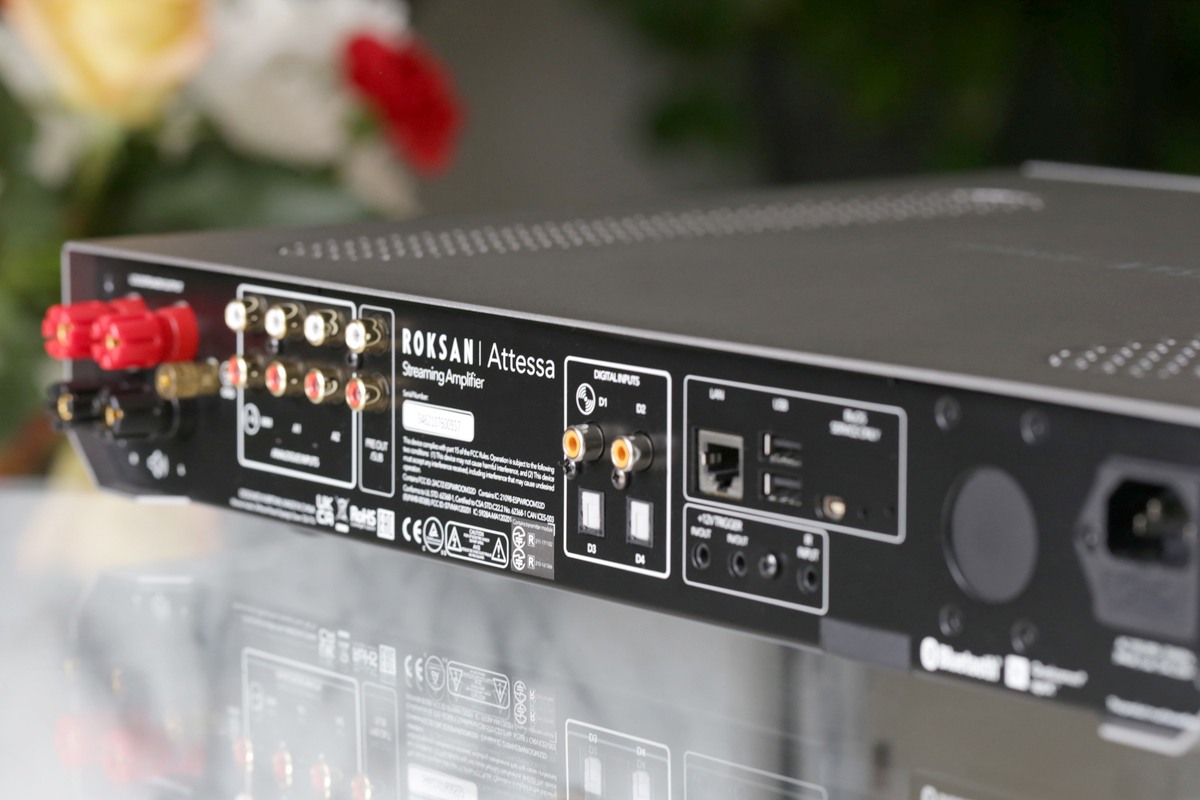
Around back, the number of inputs available shows the versatility of the Roksan amplifier. There are three sets of RCA inputs; one of them for connecting a turntable, and the other two for line-level sources. The A2 input can be configured to bypass the volume control, which would allow the Attessa to be integrated with a home-theater setup, where the Attessa would act as a power amplifier to drive the front speakers. The Roksan also has left and right analog outputs, allowing you to add a power amp with greater output if you wish (with the Roksan acting as a preamp in this configuration). The Attessa has four S/PDIF inputs: two coaxial (RCA) and two optical (TosLink). Coaxial input D1 is designed to be the input for the Attessa CD transport, so that it works as one with the amp once set up through Roksan’s MaestroUnite app. The two coax digital inputs are compatible with up to 24 /192 PCM audio, and the optical digital inputs can handle up to 24/96 PCM audio. In addition to Wi-Fi connectivity, the Attessa has an ethernet connection around back. There are also two USB Type-A ports, which can be used to connect a USB drive with audio files for playback through the BluOS app. The Roksan is compatible with up to 24/192 PCM audio via ethernet or USB. Beside the ground post for the phono stage are two pairs of binding posts for the left and right speaker connections. Finally, the unit has 12V triggers—one input only and two bidirectional—for powering up automatically by other components.
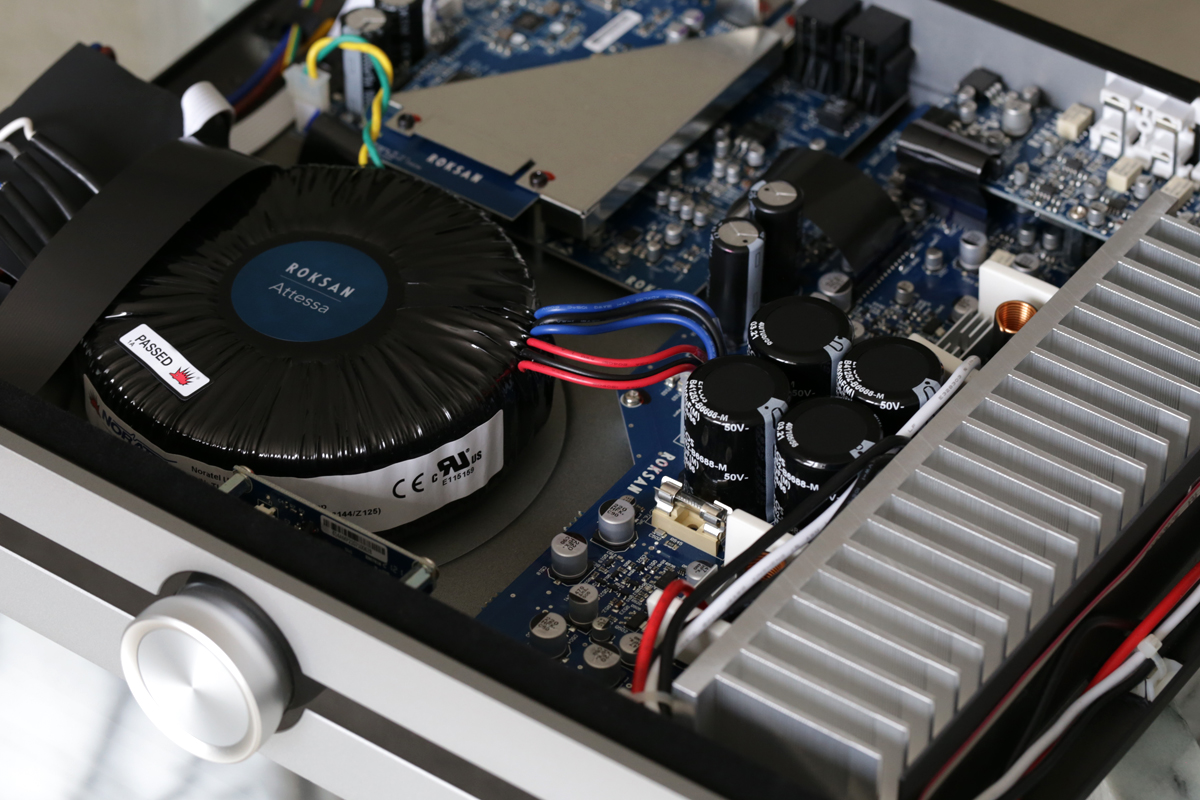
As noted in the introduction, the power amplifier section is a class-AB design; its robust 400VA toroidal transformer and 13,000μF of energy storage make up much of the Attessa’s 23 pounds. Although modestly rated at 80Wpc (both channels driven) into 8 ohms, it nearly doubles its output into 4 ohms, at a rated 130Wpc. The power supply has dedicated rails for the voltage and current gain stages to reduce the chance of clipping distortion, according to Roksan.
The Attessa comes with a conventional IR remote control, which has the usual buttons for source switching, volume control, mute, and power. In the middle of the remote is a circular control pad for playing and navigating tracks, and at the top right is a button to call up the Attessa’s Settings menu. Most of the parameters can be also set in the MaestroUnite app, but there are two key parameters that have to be set up via the front panel or this remote: AV Bypass and Standby Plus. Standby Plus allows the unit to be automatically turned on by the MaestroUnite or BluOS apps, or when music playback is sensed on one of the inputs.
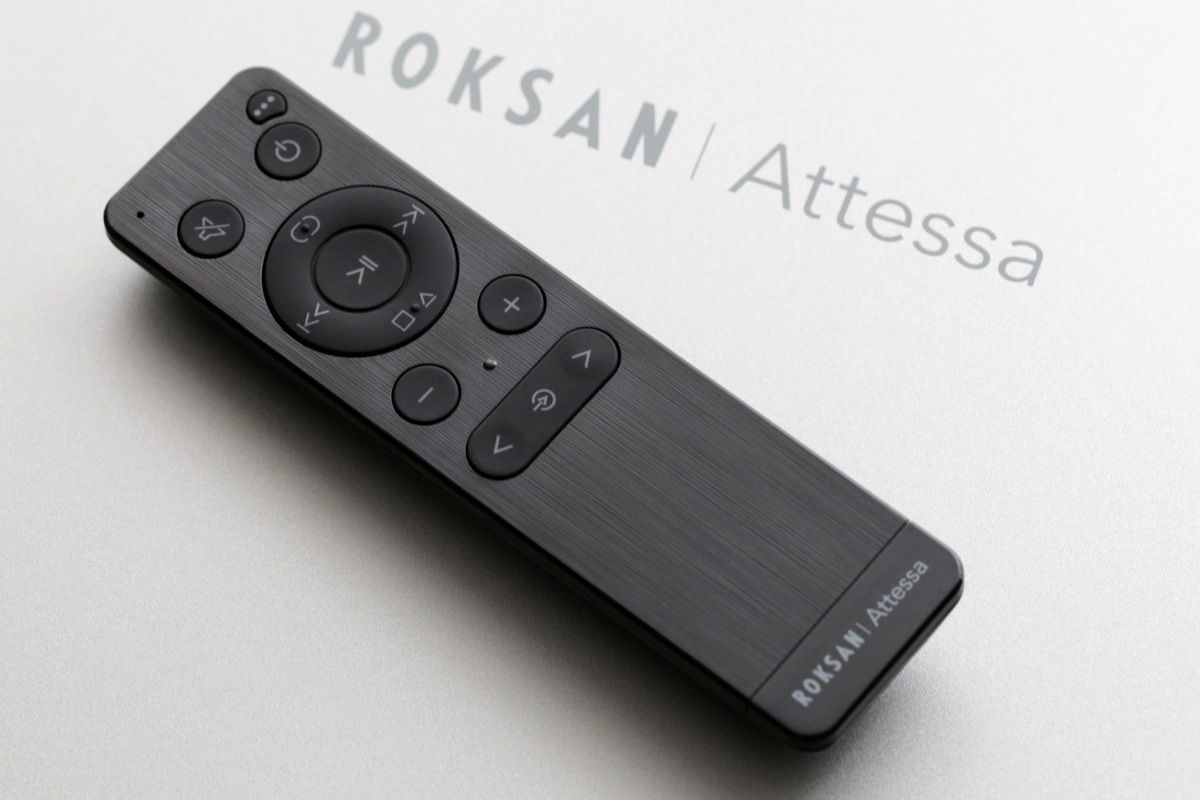
MaestroUnite app
Unlike the NAD M10 V2, which uses the BluOS Controller app for everything, the Roksan Attessa streaming amplifier requires two apps. You need to use the MaestroUnite app for initial setup and to connect the amp to your network; the BluOS app takes over for day-to-day use.
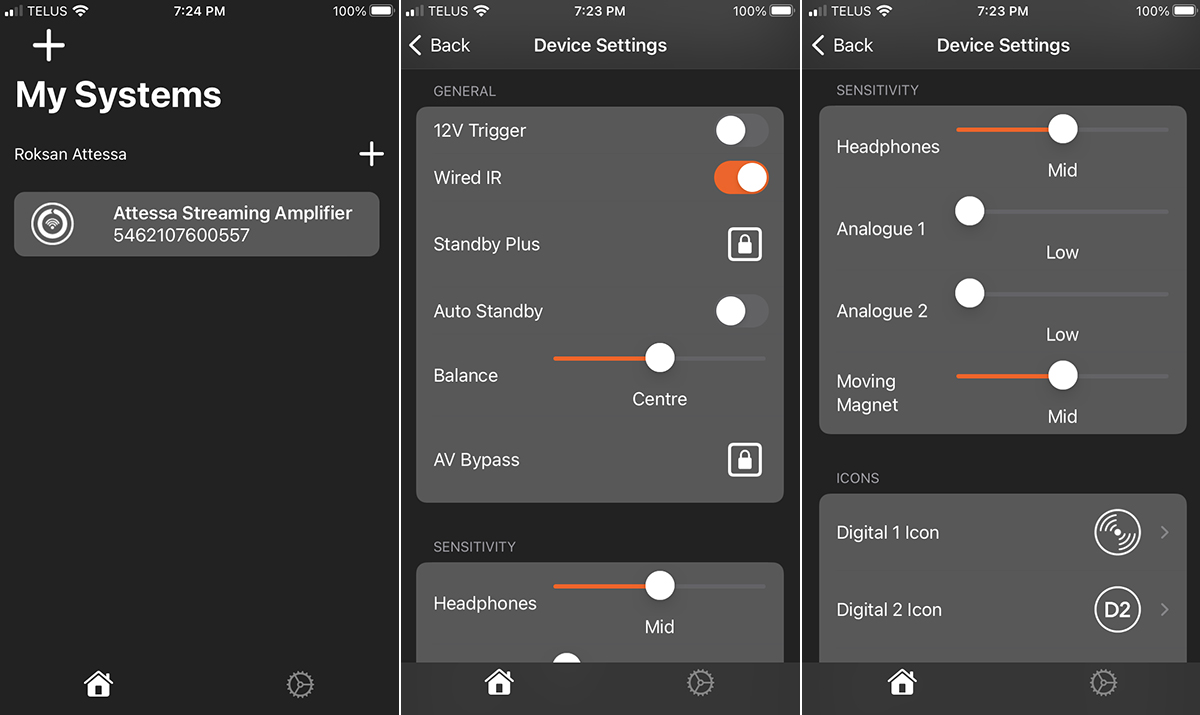
The MaestroUnite app enables control of a number of useful settings, such as turning on the 12V trigger, auto standby, and a balance setting. You can also adjust the gain sensitivities of the headphone section, the two analog inputs, and the MM phono section. You can even choose different icons for the OLED display if you wish.
BluOS Controller app
For day-to-day operation, you use the BluOS Controller app. Through this app, you can choose which streaming services you want to use (provided that you have a subscription), or select an input to listen to another source.
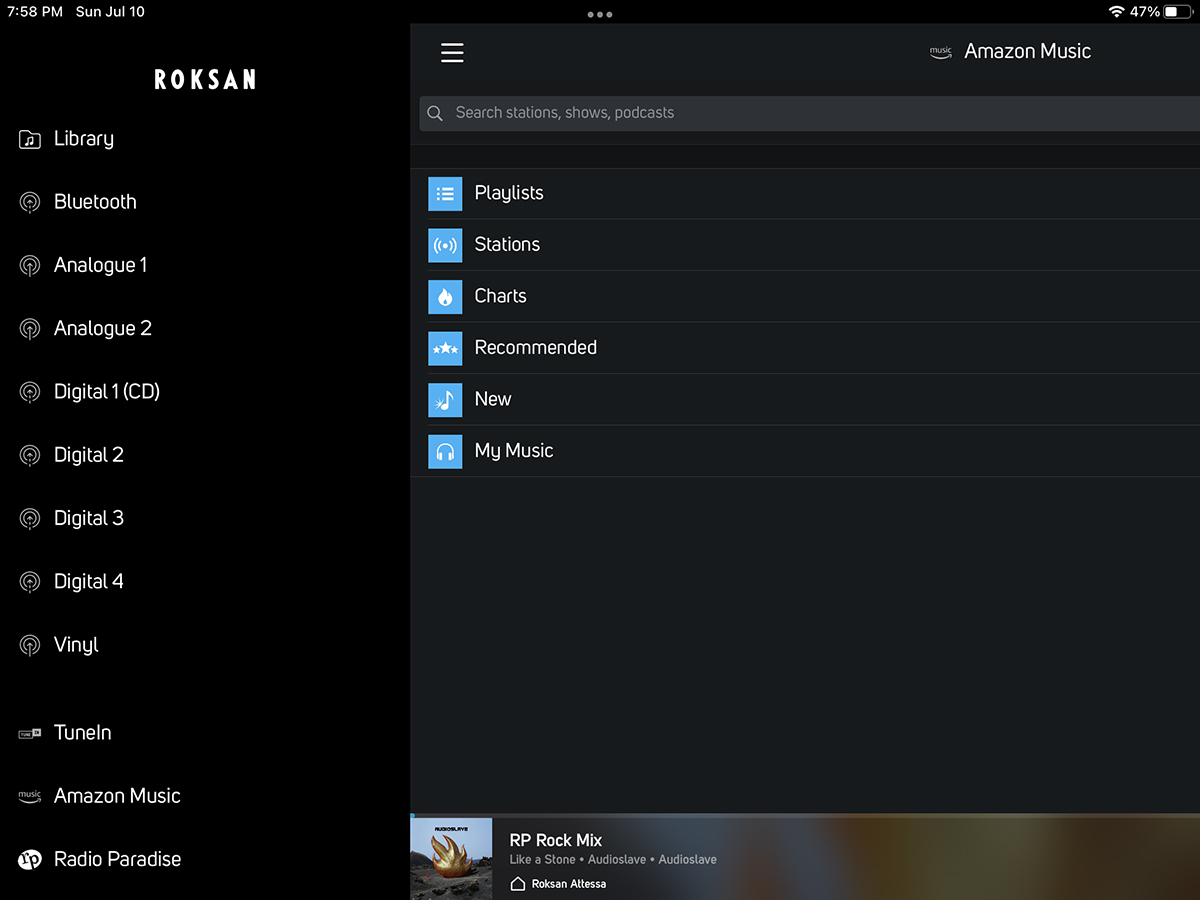
The Attessa also supports Apple’s AirPlay 2, for streaming CD-resolution audio from any app on a Mac or iOS device. It also supports Spotify Connect and Tidal Connect, so you can cue up music in the apps for those services, then transfer playback to the Attessa amplifier. For Tidal, BluOS supports Master Quality Authenticated. The MQA logo shows up in the app to indicate if a track is MQA verified. The BluOS app also has a Library icon, which I used to set up access to the NAS where I store my music library. You can also set up playlists, and adjust the playback volume. I found BluOS to be very solid. I experienced no dropouts or stuttering when listening to high-resolution content, either from my NAS or through streaming services.
Listening
I set up the Roksan in my basement listening room. I primarily listened to it through a pair of KEF LS50 standmounts (discontinued, $1499/pair when available), as I find these speakers to be great for evaluating amplifiers. The LS50 is a relatively demanding load—some power is needed since the sensitivity is rated at a low 85dB/1W/1m. The bass response is reasonable; down only 3dB at 80Hz, and with usable bass to 60Hz. My room is rectangular, 24′ long and 16′ wide, with an 8′ ceiling. My seating area is on the right half of the longest wall. I placed the speakers on 24″ wooden stands, 12′ from my listening seat. The speakers were 18″ from the wall behind them.
Using the BluOS app with streaming services
For streaming services, I primarily use Amazon Music Unlimited for CD-quality or high-resolution music, and Spotify when I’m mobile. With Amazon Music, the BluOS app doesn’t show the bit depth and resolution of the track, just quality designations; for example, “CD” means 16/44.1, and “HR” generally means 24-bit, but with a sample rate that varies from 44.1 to 192kHz. However, Amazon’s own app does display the sample rate.
To test the dynamic capability of the Roksan Attessa streaming amplifier, I played Childish Gambino’s track “35.31” from his album 3.15.20 (24-bit/44.1kHz FLAC, RCA / Amazon Music). The track starts with an unremarkable soundstage: Gambino’s voice in the middle, backing vocals around him, and Ely Rise’s keyboards slightly to the left. However, three-quarters of the way into the song, using phase manipulation, the soundstage becomes huge. I heard a wall of sound in the front of my room, with sounds even emanating from the sides of my room. When the synthesized bass kicked in, the Attessa provided a punchy beat. This track showed the quality of the Roksan’s amplifier section—the modestly rated 80Wpc output was enough to drive the LS50s loudly in my room with ample pace and musicality. I detected no distortion or unpleasant artifacts; just clean, pure music reproduction. The LS50 is a compact speaker, but the Attessa was able to coax a big, bold sound out of a pair of these.
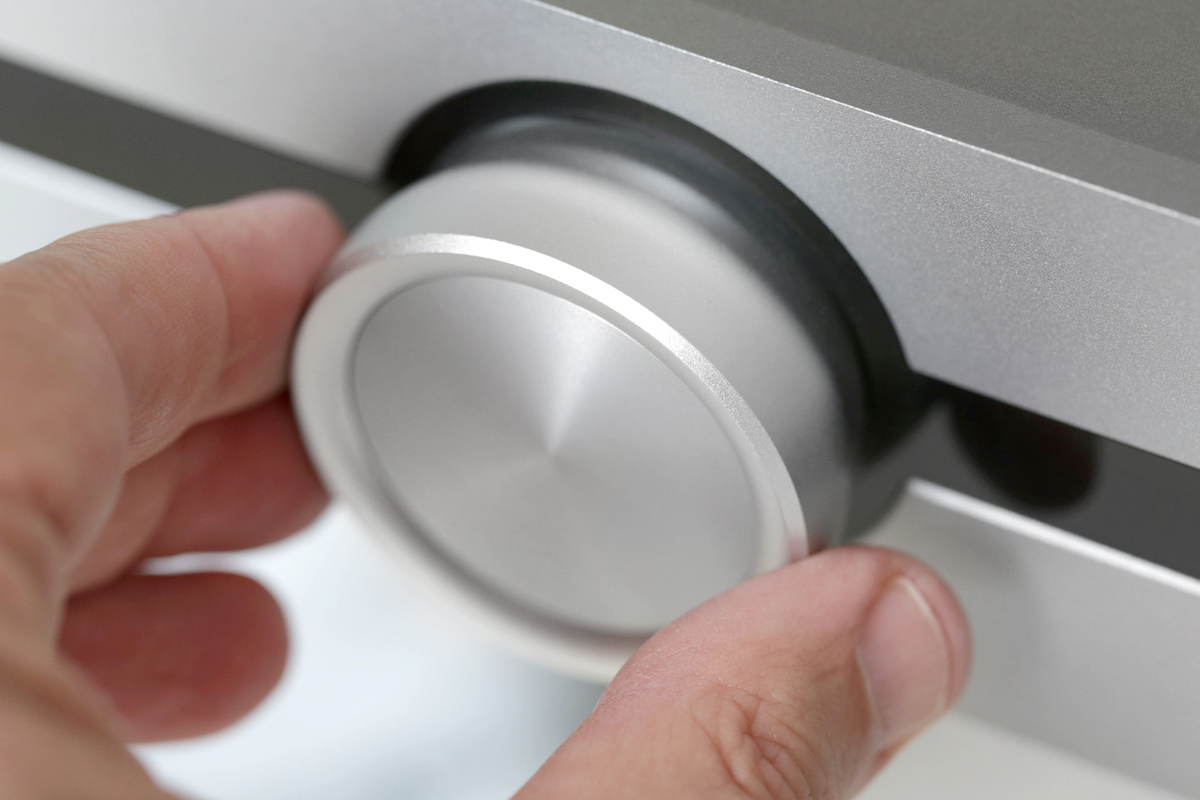
To test the bass response and driving capability of the Roksan amp even further, I played James Blake’s cover of Feist’s “Limit to Your Love” from his eponymous album (16/44.1 FLAC, Atlas Recordings / Amazon Music). This minimalist recording starts off just with Blake’s vocals and piano accompaniment. The piano tone sounded warm and rich through the Attessa/KEF combination. The song then explodes with a wobble bassline (a synthesized bass vibrato). This bass sound can rattle my walls when using a subwoofer; that’s beyond the capability of the LS50s, but the Attessa/KEF combo alone played impressively deep and loud in my room.
The LS50’s low sensitivity is demanding of upstream electronics, requiring solid amplification to play loud; it’s also a speaker that can reveal flaws in an amplifier. For example, the LS50 balances high frequencies well, but can sound a bit bright with some solid-state electronics. But I never found the Attessa/LS50 combination fatiguing. My go-to track to evaluate this aspect is Wynton Marsalis’s “The Seductress” from his album Standard Time Vol. 3: The Resolution of Romance (16/44.1 FLAC, Columbia / Amazon Music). There is a lot of detail in Marsalis’s trumpet playing, which was readily apparent when using the Attessa. This particular song has a lot of upper-frequency energy, but it wasn’t excessive or overbright through the Roksan amp.
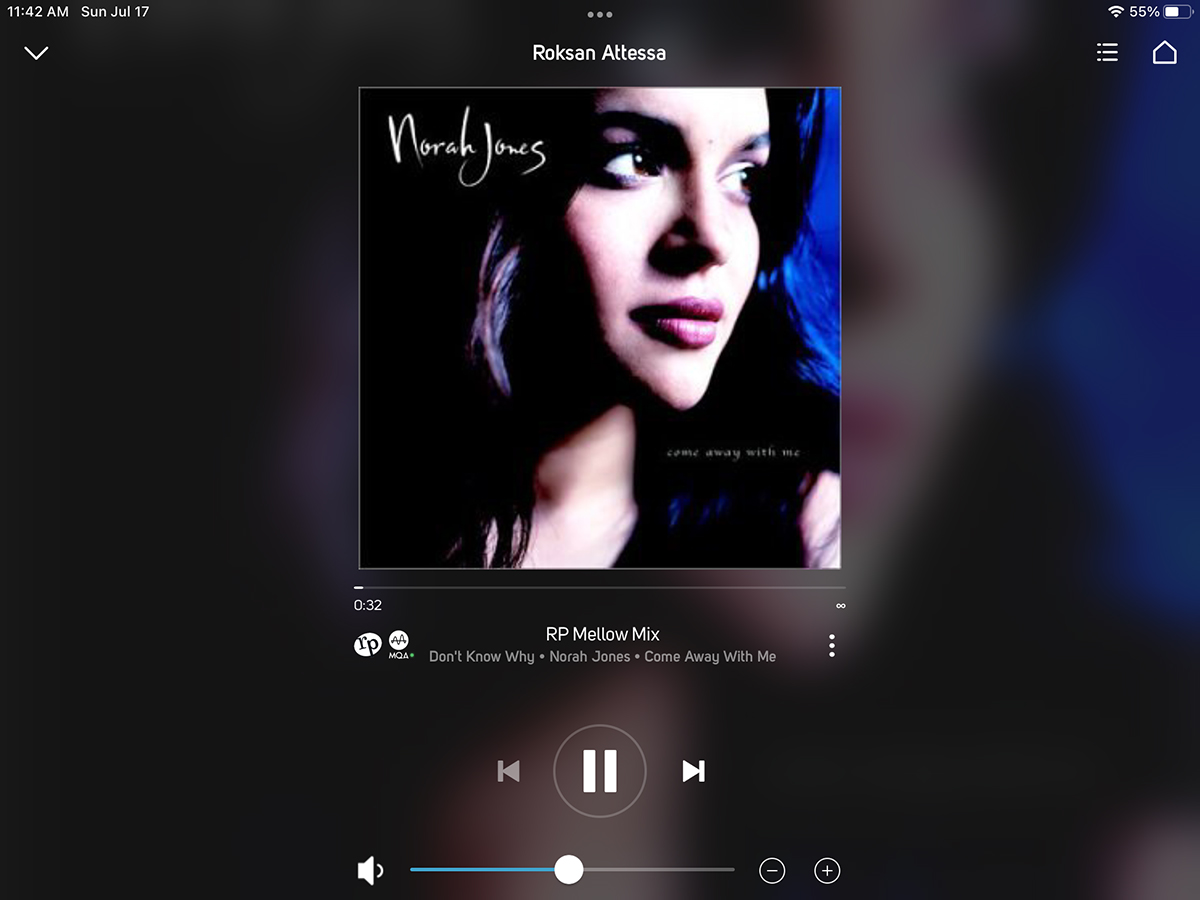
As I mentioned, the BluOS streaming system supports MQA. The Roksan Attessa decodes MQA content via BluOS, as well as from MQA-CDs played through the Attessa CD transport. The front panel of the Attessa streaming integrated amplifier displays the MQA symbol when playing an MQA track. If you don’t have Tidal, another source for MQA tracks is Radio Paradise; this free internet radio station is available through the BluOS app. The station currently has around 16,000 songs, which can be skipped but not searched, and the sound quality is very good. I compared the playback of Norah Jones’s “Don’t Know Why” from her album Come Away with Me (MQA, Blue Note Records / Radio Paradise) with the Amazon Music Unlimited version, and once the volumes were level-matched, they sounded nearly identical. The Radio Paradise version seemed to have a thicker midrange, with Jones’s vocal sounding slightly chestier, but not enough of a difference to really matter. It’s remarkable that such a high-quality service is offered without a monthly fee—it relies on listener support for funding.
Further listening
The Attessa amp has a built-in phono section, so I connected my Pro-Ject Audio Systems Debut Carbon Evo turntable (which in Canada is supplied with an Ortofon 2M Red moving-magnet cartridge). This proved to be a good match tonally, and I didn’t have to change the gain from the default midpoint setting in the MaestroUnite app.
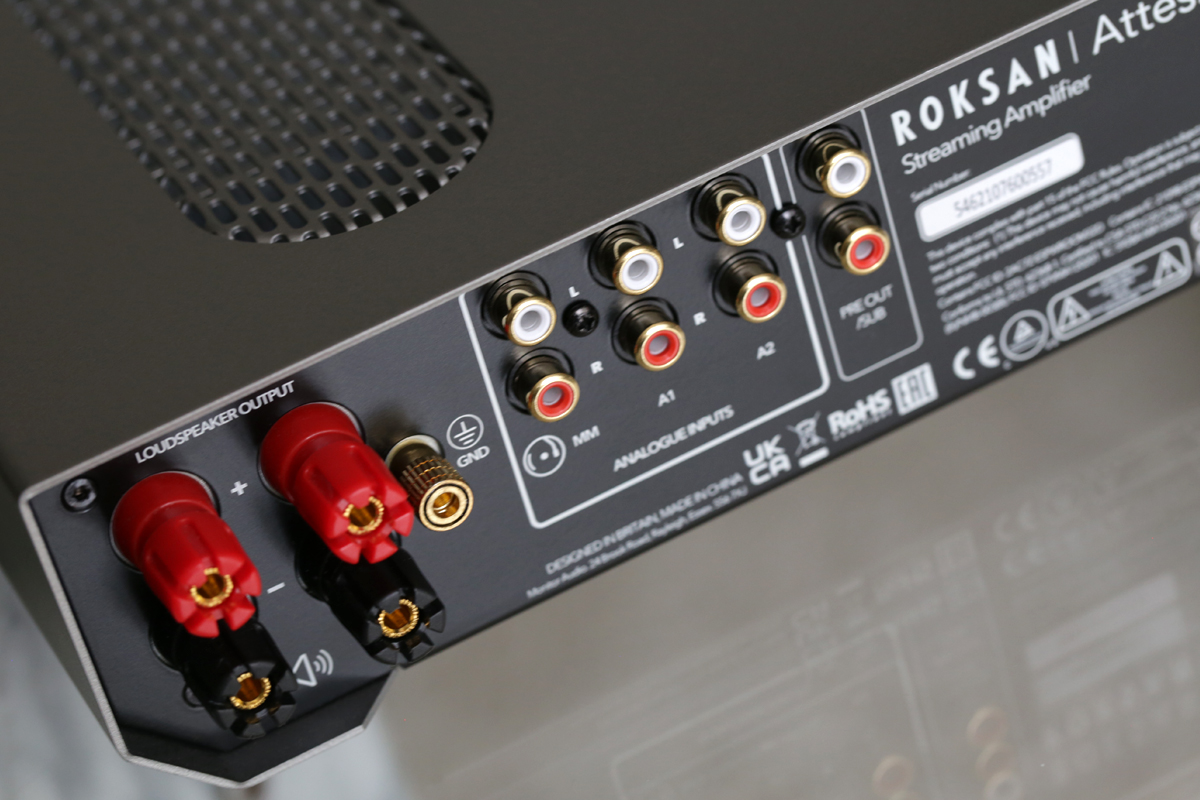
I gave a Latin-jazz album a listen—Stan Getz and Charlie Byrd’s classic Jazz Samba (Verve / DCC Compact Classics LPZ-2011). This version was mastered by Steve Hoffman. On the Antônio Carlos Jobim track “Desafinado,” the warm sound of the recording was readily apparent when played back through the Attessa. Getz’s tenor saxophone sounded especially sultry. When I listened to the high-resolution digital version streamed from Amazon Music (24/96 FLAC, Verve / Amazon Music), Getz’s sax had more air, but didn’t sound as warm as the vinyl track. The Roksan easily sorted out these sonic differences.
Using the Attessa’s Bluetooth connection, I streamed from my phone to the unit. Listening to Ryo Fukui’s “Early Summer” from Scenery (320kbps Ogg Vorbis, Trio Records / Spotify), the Spotify version’s soundstage wasn’t as wide as with the CD-quality version through Amazon Music. Dynamically, Ryo’s piano sounded compressed, without as much punch as I heard in the Amazon CD-resolution stream. I could easily hear those differences through the Roksan. Bluetooth connectivity is not so important for audiophiles, but it’s a useful addition as a convenient way of sharing music for those who aren’t as engaged with sound quality.
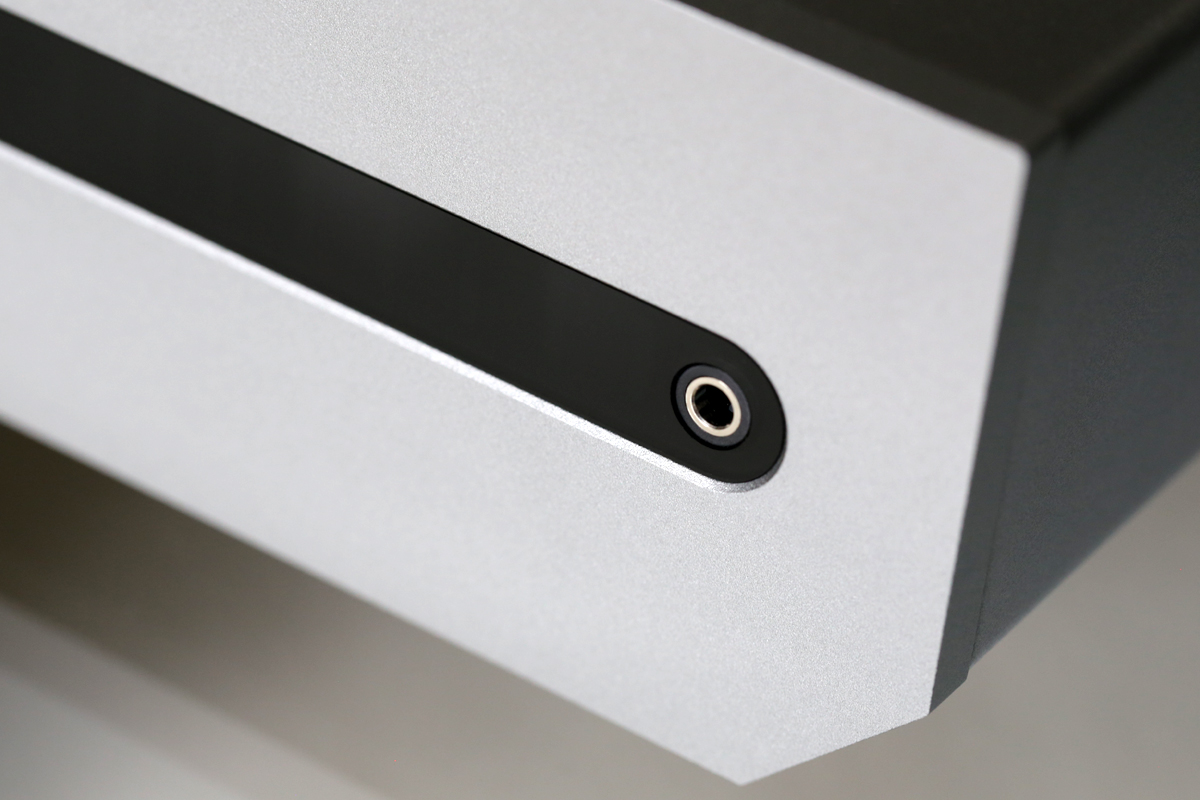
Finally, I did some brief listening with my Grado SR100 headphones (discontinued), using an adapter to connect the headphones’ 1/4″ plug into the 1/8″ headphone port on the front of the Attessa. For this evaluation, I used “Robot Lovers” from Casey Abrams’s Put a Spell On You (16/44.1 FLAC, Chesky Records / Amazon Music), which is part of the Chesky Binaural+ Series of recordings. The warmth of the recording and the ambience of the church where it was recorded were readily apparent when listening through the Roksan’s headphone output. When Jacob Scesney’s saxophone moves around the soundstage, it was very easy to track when listening through the Attessa/Grado combo.
Comparison and alternative
A good alternative to the Roksan Attessa streaming integrated amplifier is the NAD M10 V2 ($2795), which I recently reviewed for SoundStage! Simplifi. It’s also BluOS-enabled and has a similar feature set, with a 100Wpc (into 4 or 8 ohms) class-D amplifier, two analog inputs, one coax and one optical digital input, a preamp output, and a remote control. Where they differ is in the Roksan’s built-in phono section, additional coax and optical digital inputs, and size—the more compact NAD is half as wide and two-thirds the depth of the Attessa. On the other hand, the NAD has an HDMI eARC input, dual subwoofer outputs with crossover adjustments, the ability to output to wireless surround speakers, a large OLED display to show album art, and Dirac Live room correction. Frankly, the inclusion of Dirac is the most important difference, as this means the sound of the M10 V2 can easily be customized for different speakers and optimized to compensate for issues with room acoustics.
For a listening comparison, I hooked up my reference integrated amplifier, the NuPrime IDA-16 (discontinued, $2250 when available) to the KEF LS50s. The NuPrime has similar dimensions to the Roksan and an even lower profile. It is starkly minimalistic even when compared to the functional appearance of the Roksan. There are no control knobs on the front panel, only buttons to change sources, mute the unit, and change the volume level, and LEDs to show the source selected and the volume level. The IDA-16 features a class-D amplifier, rated at 200Wpc into 8 or 4 ohms. It houses an ESS Technology ES9018 Sabre DAC, whereas the DAC in the Roksan was developed in-house.
The NuPrime lacks a phono stage, so I used an outboard phono preamplifier for listening to vinyl. Not surprisingly, the Pro-Ject Phono Box S2 was an even better match to the Pro-Ject turntable than the phono section of the Attessa. Pro-Ject provides recommended settings for gain, capacitance, and impedance for the Ortofon 2M Red cartridge, which can be set on the Phono Box via dip switches. When listening to the Getz/Bird Jazz Samba again, I heard slightly more air around the cymbals on the track “O Pato” with the NuPrime/Phono Box combo when compared to listening through the Roksan Attessa’s built-in phono stage. Bird’s guitar, however, had a warmer tone through the Roksan.
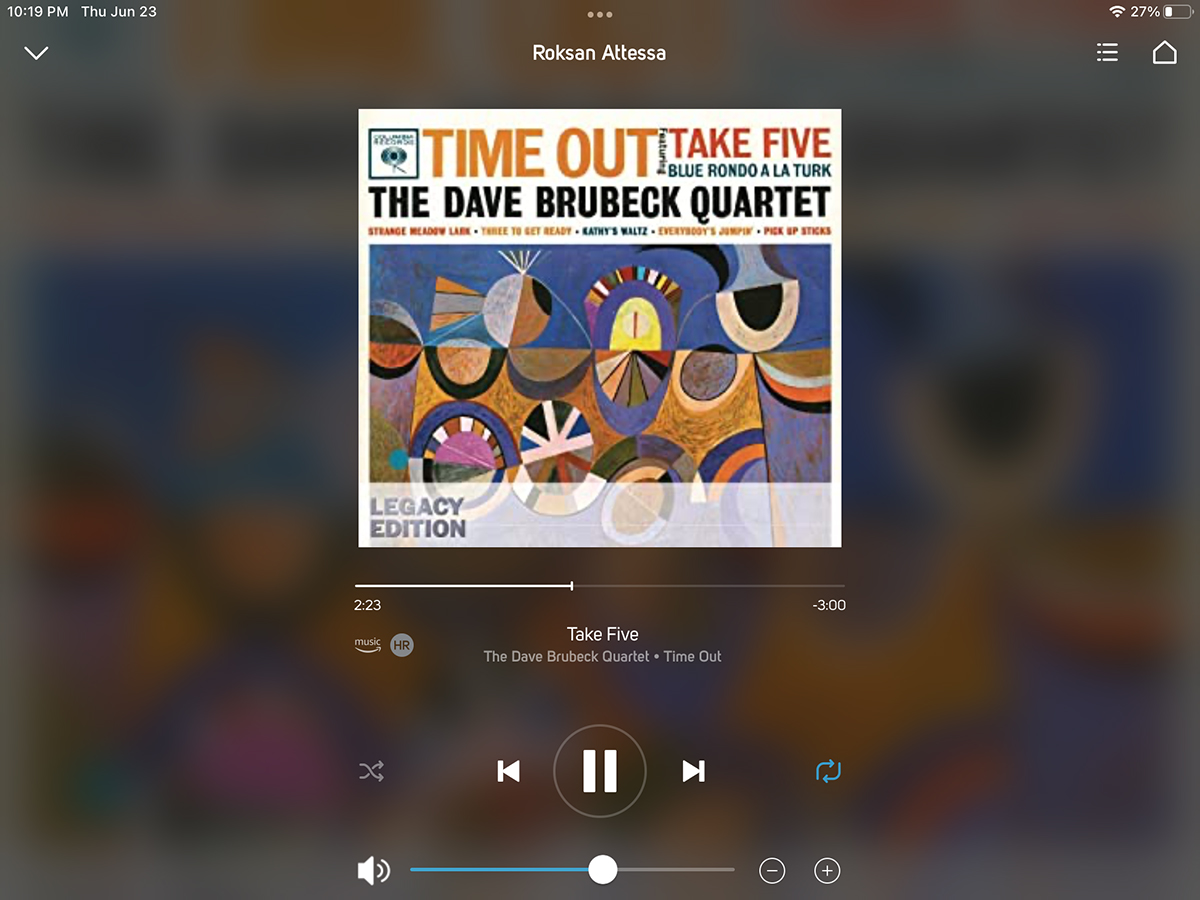
For streaming music, I used an Amazon Fire Stick 4K Max and extracted the PCM audio to feed my NuPrime IDA-16 through an optical digital input. On Time Out (24/96 FLAC, Columbia / Amazon Music), by The Dave Brubeck Quartet, the iconic track “Take Five” showcases Joe Morello’s expert drumming. When Morello hits his tom and snare drum with authority, I could really feel it through the NuPrime. With the Roksan, there was slightly less snap. However, once again, I heard more warmth through the Roksan; Paul Desmond’s saxophone sounded dryer and more clinical with the NuPrime.
Conclusion
The Roksan Attessa streaming integrated amplifier impressed me as a one-box solution for listening to music. It has almost every type of connection available, lacking only an HDMI eARC port for connecting a TV. The power amp section in the Attessa is especially good, with a large toroidal transformer that enables it to reproduce dynamic swings in music with ease. The integrated phono section is another nice touch. The inclusion of BluOS is icing on the cake; with a robust streaming solution built-in, I can’t think of an easier way to control the amplifier. The Roksan Attessa streaming integrated amplifier is well suited to any music lover, but particularly so to one with a large vinyl collection who wants an unobtrusive, reliable solution that includes the ability to stream music.
. . . Vince Hanada
Note: for the full suite of measurements from the SoundStage! Audio-Electronics Lab, click this link.
Associated Equipment
- Electronics: NuPrime IDA-16 integrated amplifier, Pro-Ject Phono Box S2 phono preamplifier.
- Speakers: KEF LS50.
- Sources: Amazon Fire TV 4K Max, Pro-Ject Debut Carbon Evo turntable with Ortofon 2M Red cartridge.
- Control device: Apple iPad Air 2.
- Cables: Analysis Plus Blue Oval in-wall speaker cable.
Roksan Attessa Streaming Integrated Amplifier
Price: $3399.
Warranty: Five years, parts and labor.
Kevro International
Unit #4 McKay Road
Pickering, Ontario L1W 3X8
Canada
Phone: (905) 428-2800
Website: www.roksan.com



